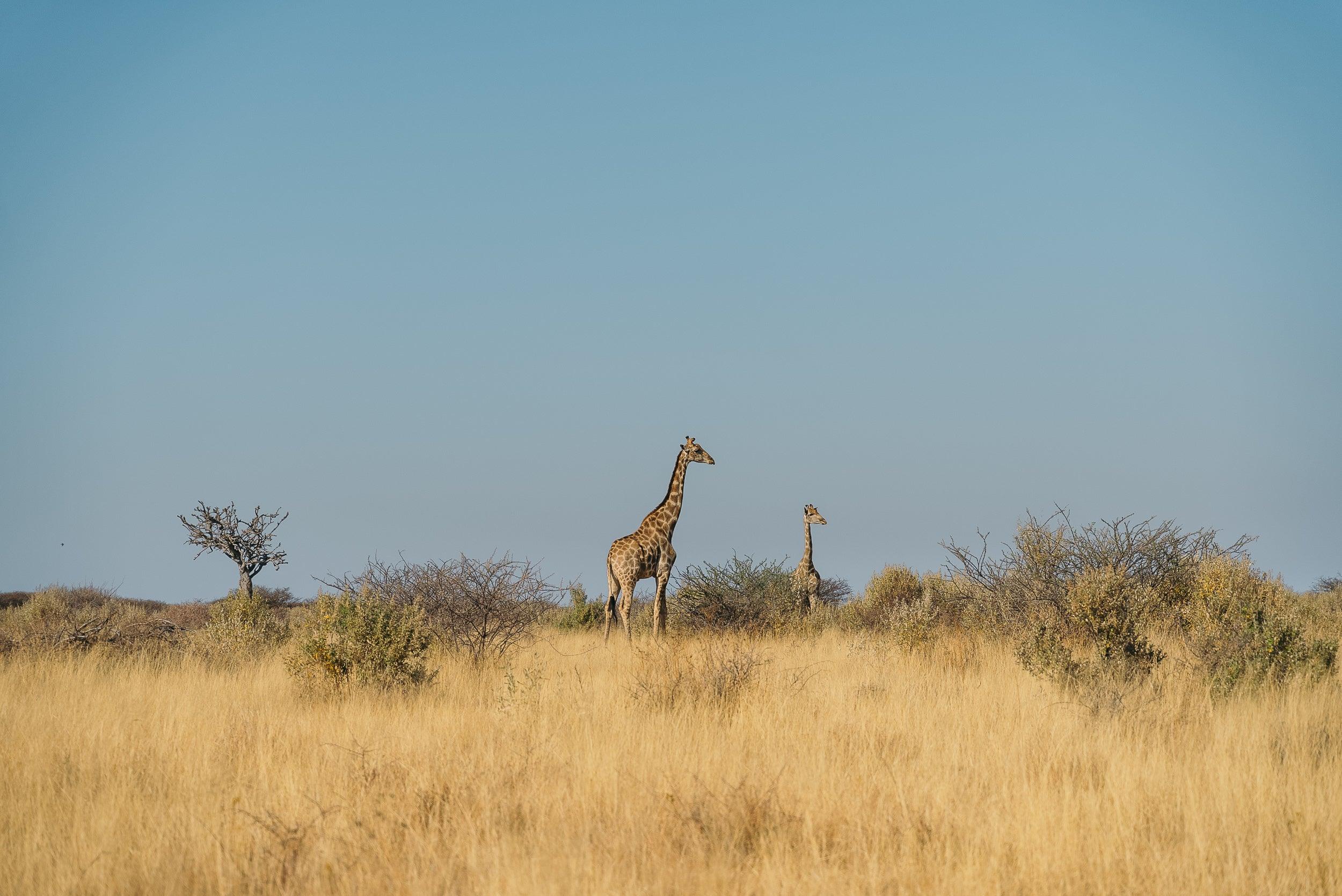5 curiosities of the wildest Namibia

Hunting in Africa is a dream that every hunter wants to fulfill, due to its large number and variety of fauna. Namibia specifically is one of the most recommended countries to live the experience, since it has 70,000 hectares of open hunting, a whole wild adventure in which you will not only hunt incredible animals, but you will fully experience their culture and customs. You can find out about our hunting visit to this country by reading our blog or watching our Cazavision series “Wild Namibia” .
To learn a little more about this wild territory, we are going to take a tour of this country to show you 5 curiosities about Namibia that will leave you wanting to visit the great African place.
1. The second least populated country on the planet
This makes it a wildlife sanctuary, where you don't have to go to a nature reserve to see fascinating animals. Only by traveling its roads, you can find large kudus in the south, a species also called "the gray ghost" and fast ostriches. Crossing the tropic of cancer you will see light gazelles jumping on the horizon and the shadow of tall giraffes. You'll also find wildebeest and zebra, which usually won't be too far from each other. Arriving at the coast, lagoons and marshes are filled with pink flamingos.

2. The oldest desert in the world
The Namib or Sossusvlei desert was formed more than 65 million years ago. We are talking about a desert country, and several unique cases stand out: the only coastal desert, the oldest in the world and with the highest sand dunes in the world... It can also boast of being one of the most beautiful deserts. Its red sand dunes are said to be due to pigments carried by the wind from inland, from the red Kalahari desert.
The famous DUNE 45 is the name of one of the most photographed landscapes by safari travelers in Namibia. A visual spectacle of sand in multiple reddish tones wherever you look and to which travelers ascend to see the sun rise. Miles and miles of sand that can be seen from a distance. The most impressive dunes are found in the Sossusvlei salt flat, which in African means “the point of no return”. Here you can see the highest ones reaching more than 300 meters in height.
In this place, the oryx is the undisputed king of the desert, it can go weeks without drinking water and it extracts it from the grass, shoots and fruits on which it feeds.

3. The Skeleton Coast and its only gas station
We went along the Skeleton Coast in the Namib desert, a 500km stretch where ocean currents wreck ships and whales. Due to its arid climate and temperatures, many species such as elephants die there, hence its terrifying name. To enter it, you have to notify the authorities through the entrance door so that they have a record and send a rescue team if something happens and you do not leave through the other exit door.
Solitaire is the most famous gas station in Namibia. For decades it was the only one that existed to stock up before entering the dreaded Namibian desert (now there is another one). The gas station is still running and has decorated the surroundings with junk from old cars that were left stranded in the sand.

Despite being a lethal climate, we find an oasis of life in Cabo de la Cruz. In this geographical feature we will find one of the largest colonies of sea lions in the world.

4. Desert elephants and Etosha Park
We enter the Damaraland Region, the land of the desert elephants, this type of native and unique elephants are bigger and taller, in order to access the highest branches of the trees, they survive for a long time without water. At the heart of this land you will find the largest open-air art gallery in the world, this 'World Heritage Site' houses around 5,000 rock carvings and paintings, created around 6,000 to 10,000 years ago by the Stone Age. Depicting animals ranging from giraffes and lions, to seals and flamingos, and even geometric figures and images.

Following the route we enter Etosha, one of the largest natural parks in the world that is famous for the large number of rhinos it houses, especially black rhinos. Here we can see the big 5, (Big Five): lions, rhinos, leopards, buffaloes and of course elephants, the dream of every person who loves nature and wildlife.

5. Kunene River and Himba culture
We arrive at the south and the end of our journey, the Kunene River, which is born in Angola and forms the border between the two countries. It is an incredible place to see crocodiles, so we do not recommend taking a bath in its waters. In addition, the Himba culture develops around it, an ethnic group that maintains ancestral customs. One of the particularities of the Himba culture is their hair, which is covered by a kind of clay paste just like their body, which serves to protect them from the sun and bugs.

Author: María Balletbó